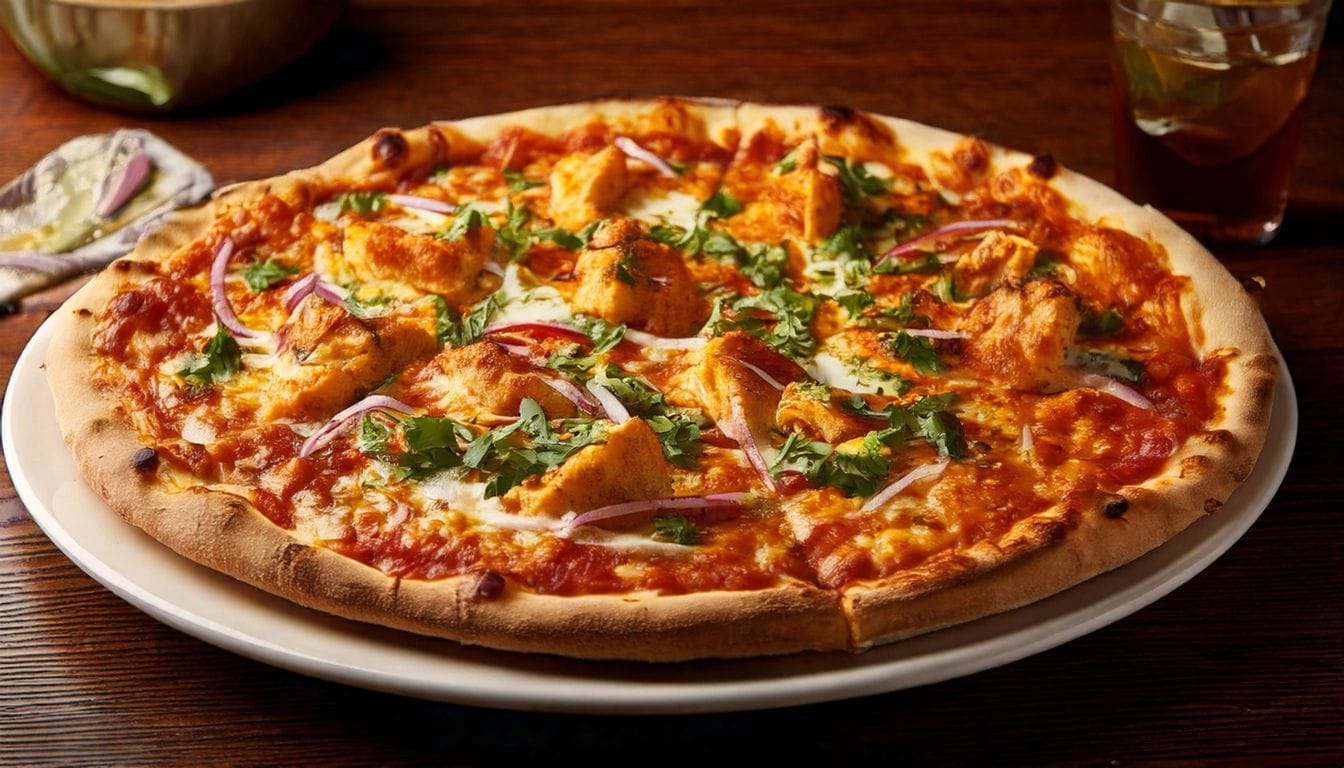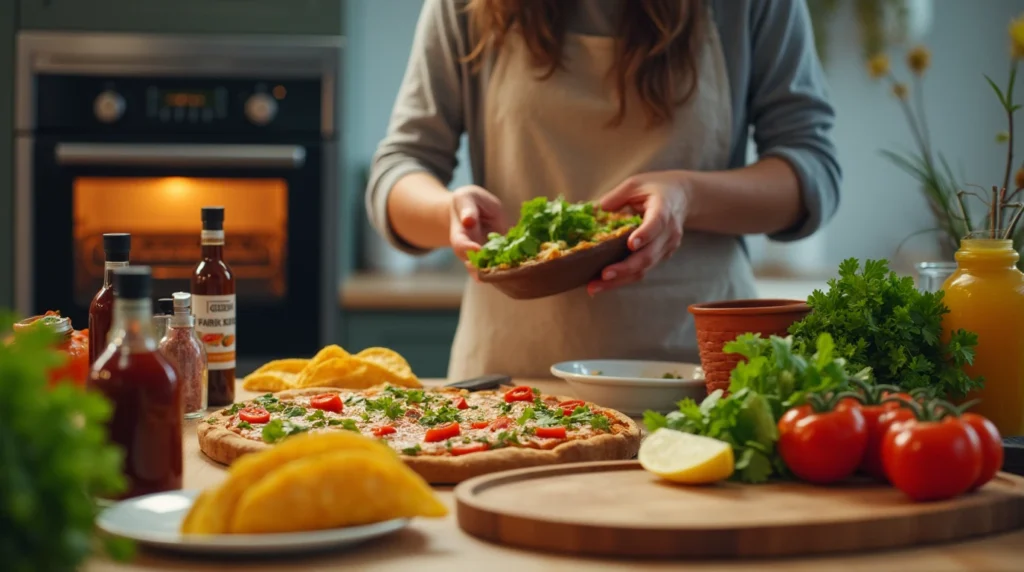
Table of Contents
Introduction
Adapting traditional foods to suit local preferences has become an art form in the culinary world. The fusion of diverse culinary traditions results in exciting new dishes that offer a perfect blend of authenticity and innovation. Americanizing global dishes bridges the gap between cultural heritage and modern dining trends, making international cuisines accessible, enjoyable, and relatable to everyone. In this article, we’ll delve deep into how traditional dishes are transformed to appeal to American palates while still preserving the essence of their origins. Whether you’re a home cook or a seasoned foodie, this guide offers valuable insights into this fascinating culinary evolution.
Thank you for reading this post, don't forget to subscribe!The Origins of Americanized Cuisine
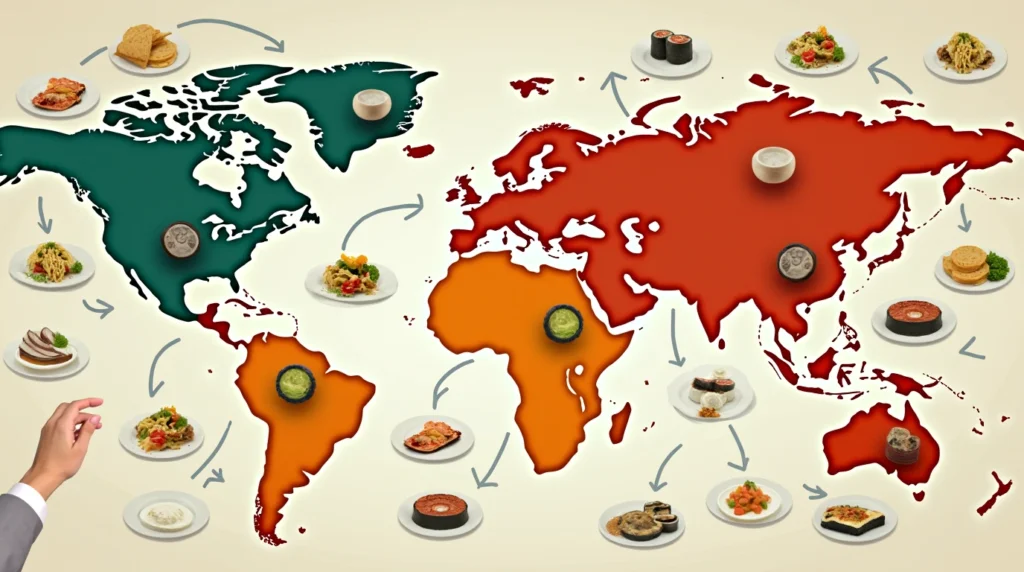
America, known for its diverse and multicultural society, has always been a melting pot of various culinary traditions. Over the years, traditional dishes from across the globe have been adapted to suit American tastes, influenced by factors like ingredient availability, convenience, and consumer preferences. This transformation is known as “Americanization” — a process where traditional recipes are modified to align with local tastes, textures, and even portion sizes. However, this doesn’t mean that the core essence of the original dishes is lost. Instead, it creates a delicious fusion that blends the best of both worlds.
Traditional foods from cultures like Mexican, Chinese, Italian, and Indian have become staples in American households, but they’ve often been altered to match American tastes. This is evident in popular dishes like Americanized Chinese food (think General Tso’s chicken), Tex-Mex (which combines American and Mexican elements), and the infamous California roll, a sushi variation tailored to American preferences.
Key Benefits of Americanizing Traditional Recipes
Adapting traditional recipes to local tastes offers several compelling advantages:
1. Diverse Flavors and Textures
Fusion cooking combines the best of global and local ingredients, creating unique and exciting flavor profiles. For instance, imagine the creamy texture of mac and cheese paired with the rich spices of an Indian curry — a perfect example of how these distinct ingredients can complement each other. The combination of unexpected ingredients like sweet and savory, spicy and tangy, or crispy and tender, results in flavorful and multi-dimensional dishes that appeal to a wide audience.
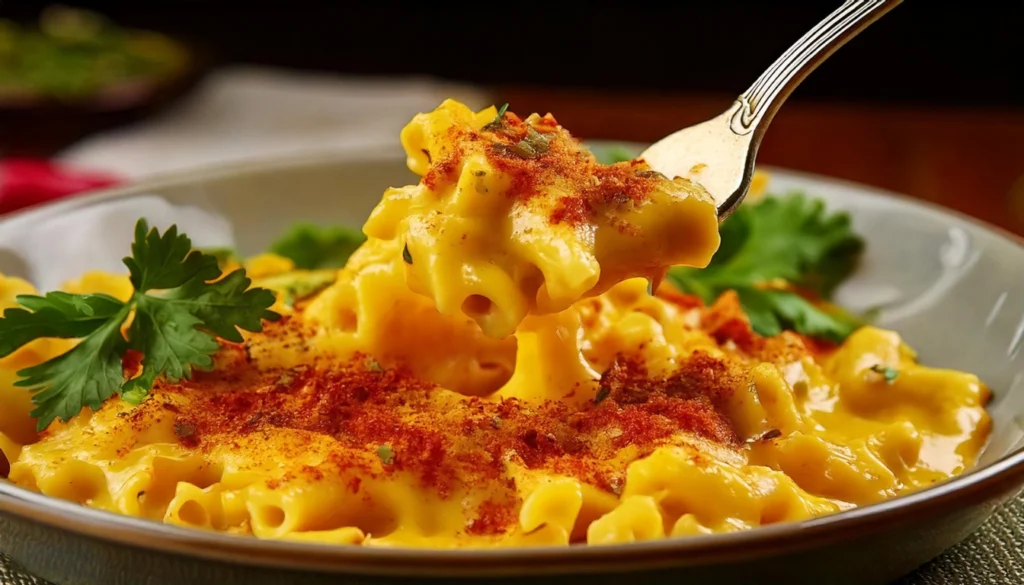
2. Increased Accessibility
Traditional ingredients may not always be readily available in local markets, especially when it comes to regional dishes from far-flung corners of the globe. However, through the Americanization process, these ingredients can be substituted with locally available options, making the recipe more practical for everyday cooking. Take, for example, the use of avocados in Americanized sushi rolls or sour cream as a topping for dishes like tacos, which were once exclusively made with traditional ingredients like seaweed or crema.
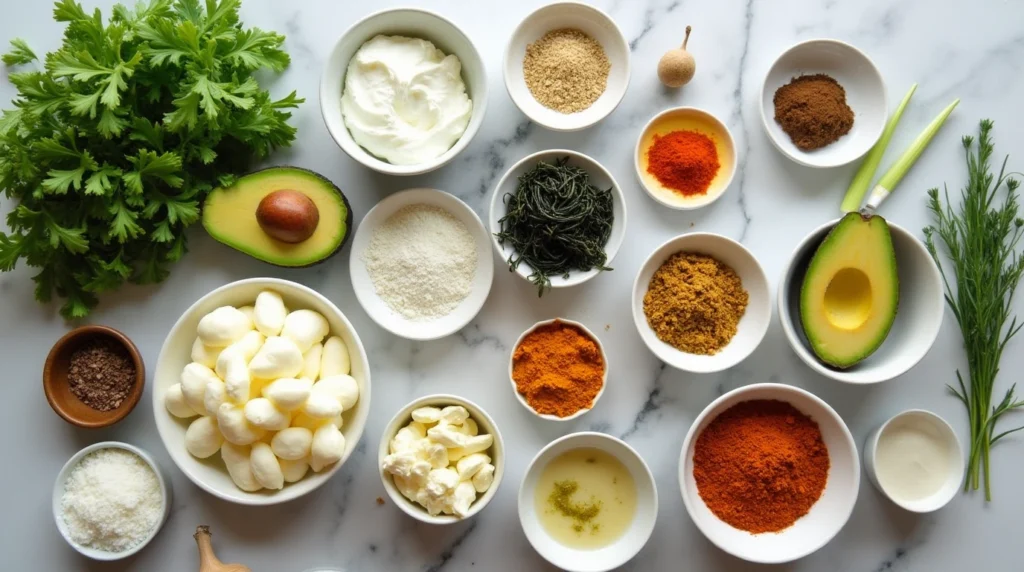
3. Room for Creativity
Adapting traditional recipes provides an opportunity for chefs and home cooks to exercise their creativity. Whether it’s experimenting with flavor combinations, changing cooking techniques, or substituting ingredients, fusion recipes offer a blank canvas for culinary exploration. You can add your personal twist while still honoring the dish’s origins, creating something entirely new and exciting.
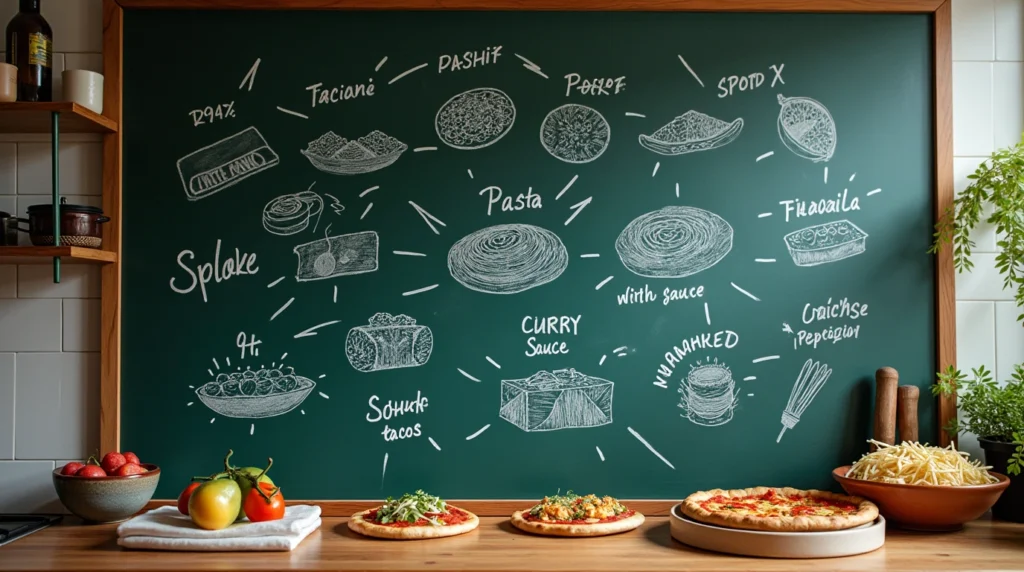
4. Cultural Inclusivity
Fusion cuisine also promotes inclusivity by making global flavors more approachable and familiar to people from different backgrounds. This is important in a multicultural society like the United States, where different cultural identities are celebrated. The Americanization of food helps introduce diverse culinary traditions to a broader audience, allowing people to appreciate international flavors in a way that feels familiar and comforting.
These benefits not only enhance your cooking repertoire but also help create a bridge between culinary traditions and contemporary American tastes.
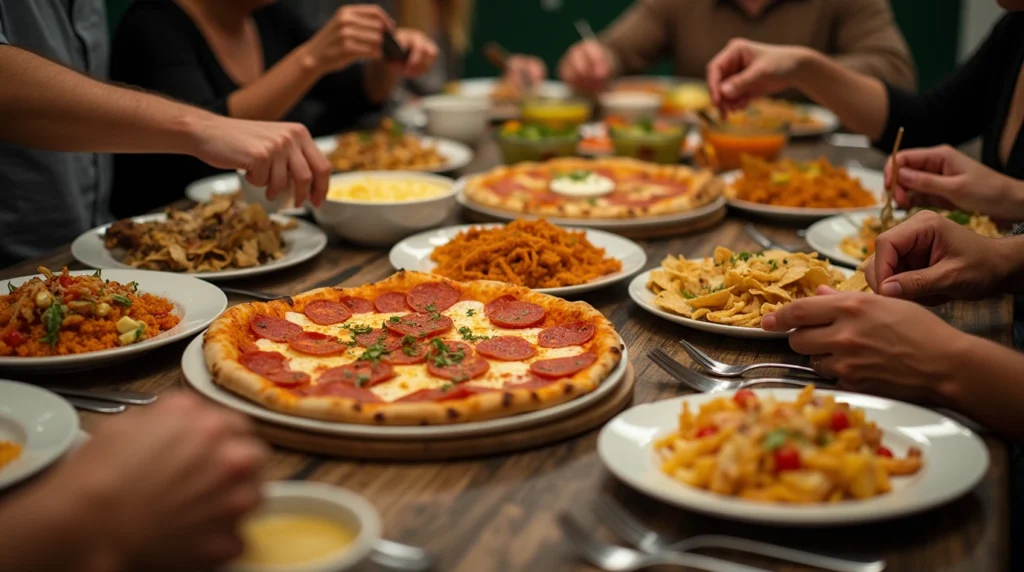
The Chicken Tikka Masala Pizza: A Perfect Example of Fusion Cuisine
To illustrate the Americanization process, let’s take a look at an exciting fusion dish: Chicken Tikka Masala Pizza. The original Chicken Tikka Masala hails from India and the United Kingdom, featuring marinated chicken cooked in a rich, flavorful tomato-based sauce. The pizza, a quintessential American dish, is elevated with the same flavor profile, creating a unique blend of two culinary worlds.
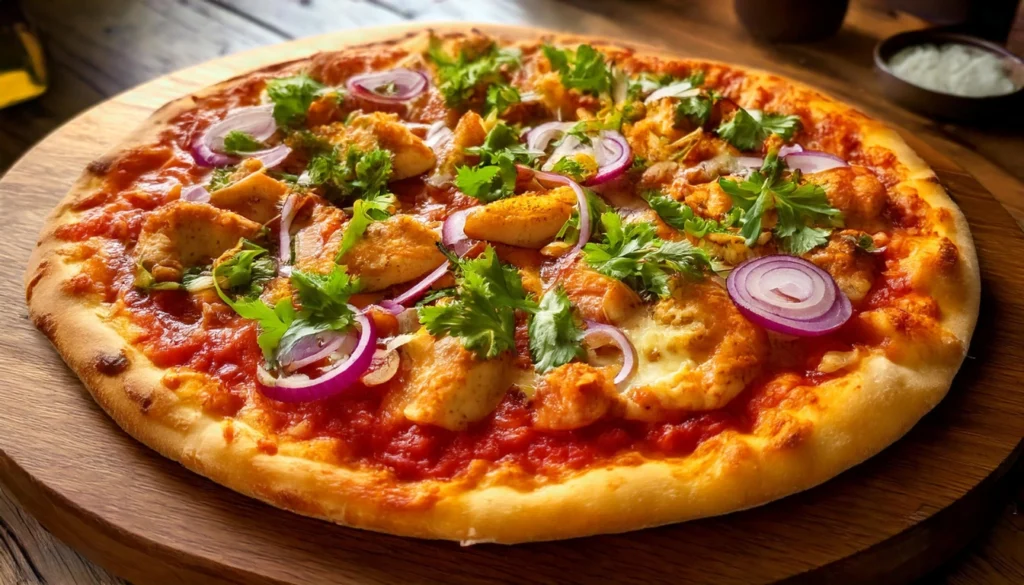
Here’s a detailed breakdown of how to create this delicious fusion dish, and how American influences transform traditional elements.
Ingredients
For the Chicken Tikka:
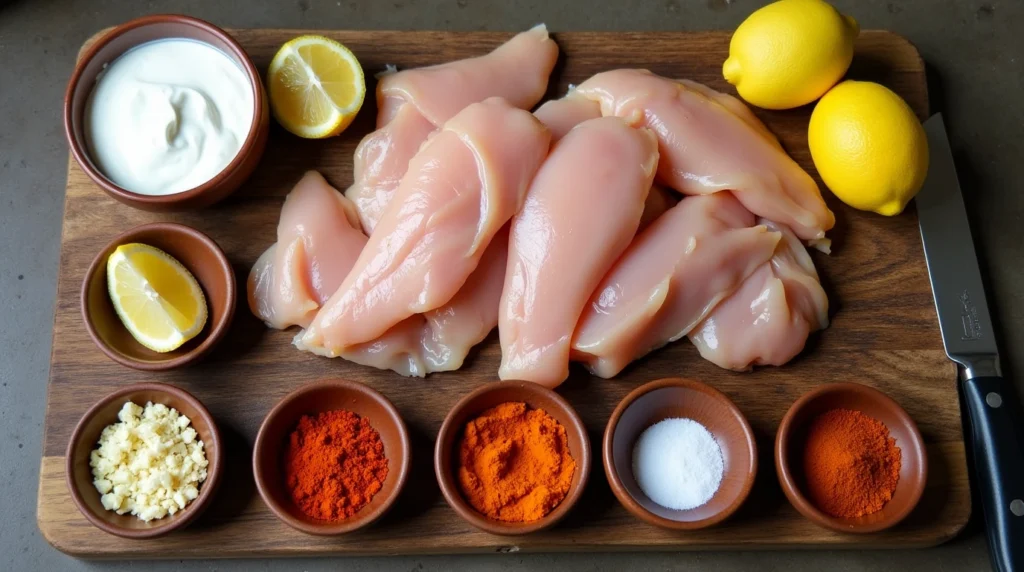
- 1 lb boneless chicken breast, cut into bite-sized pieces
- 1 cup plain Greek yogurt
- 2 tbsp lemon juice
- 2 tsp garam masala
- 1 tsp smoked paprika
- 1 tsp ground turmeric
- 1 tsp minced garlic
- 1 tsp minced ginger
- Salt and pepper to taste
For the Pizza Base:
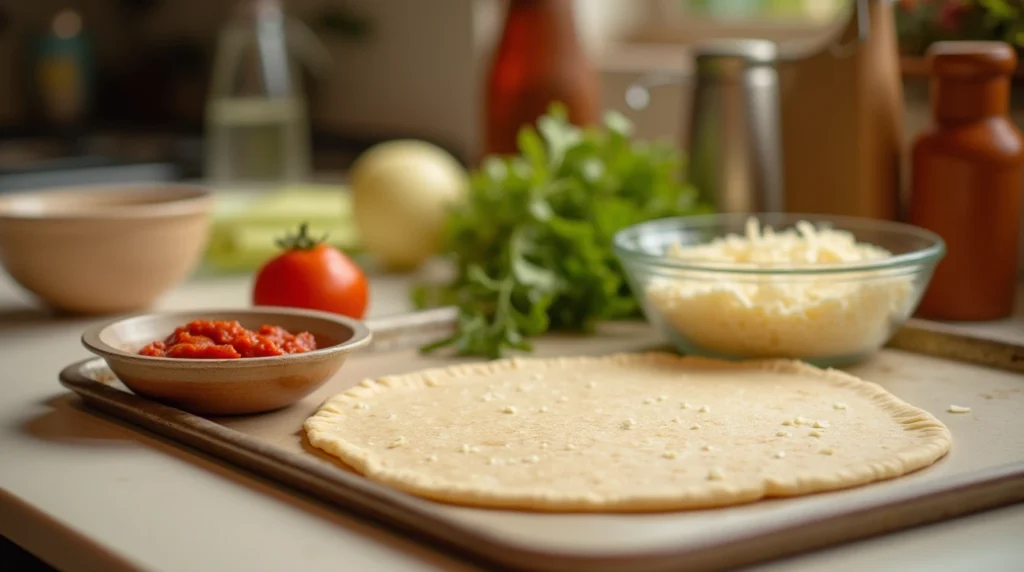
- 1 pre-made pizza crust (or your favorite homemade dough)
- ½ cup marinara sauce (a nod to Italian flavors in this fusion pizza)
- 1 cup shredded mozzarella cheese (traditionally Italian, now a staple on many American pizzas)
For Garnishes:
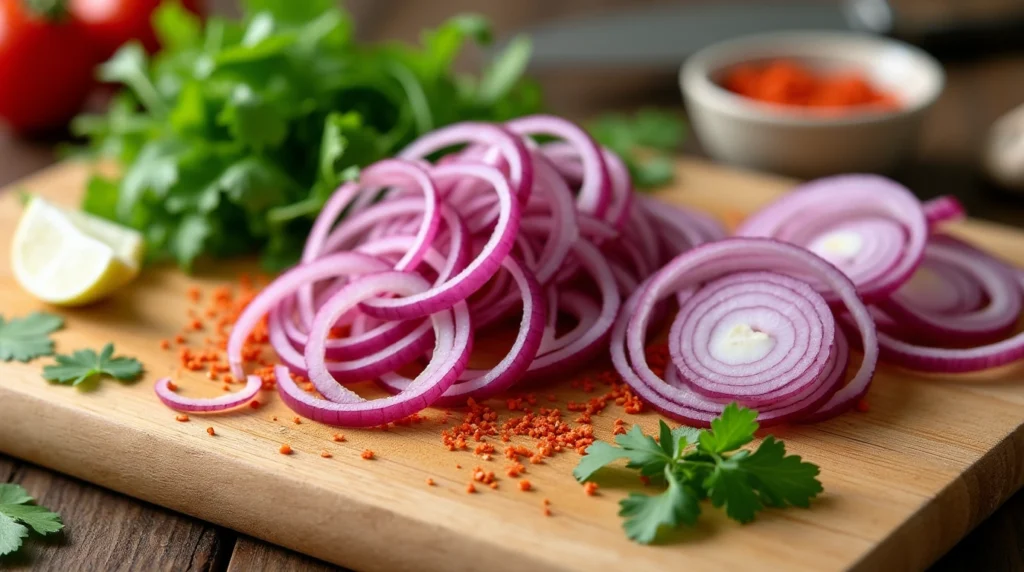
- ¼ cup red onion, thinly sliced
- ¼ cup fresh cilantro, chopped
- 1 tsp crushed red pepper flakes (optional for extra spice)
Instructions
Step 1: Marinate the Chicken Tikka
- In a large bowl, combine yogurt, lemon juice, garam masala, smoked paprika, turmeric, garlic, ginger, salt, and pepper. This marinade is a blend of bold Indian spices that form the foundation of the chicken tikka flavor.
- Add the chicken pieces, ensuring they are fully coated. Cover the bowl and refrigerate for at least 30 minutes, or up to 4 hours for maximum flavor absorption.
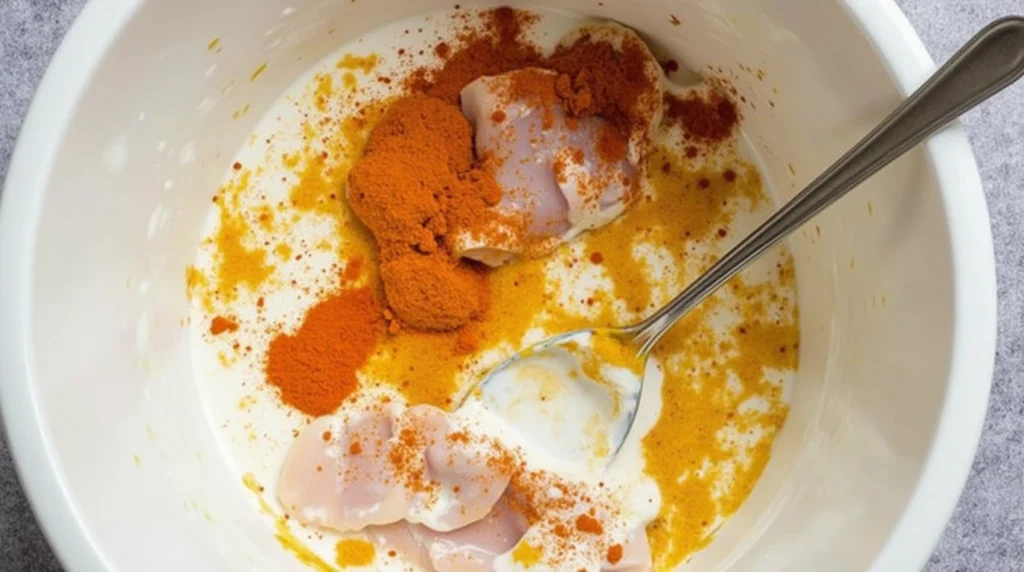
Step 2: Cook the Chicken
- Heat a skillet over medium heat and lightly grease it with oil.
- Cook the marinated chicken until golden brown and cooked through, about 5-7 minutes. Remove from the heat and set aside.
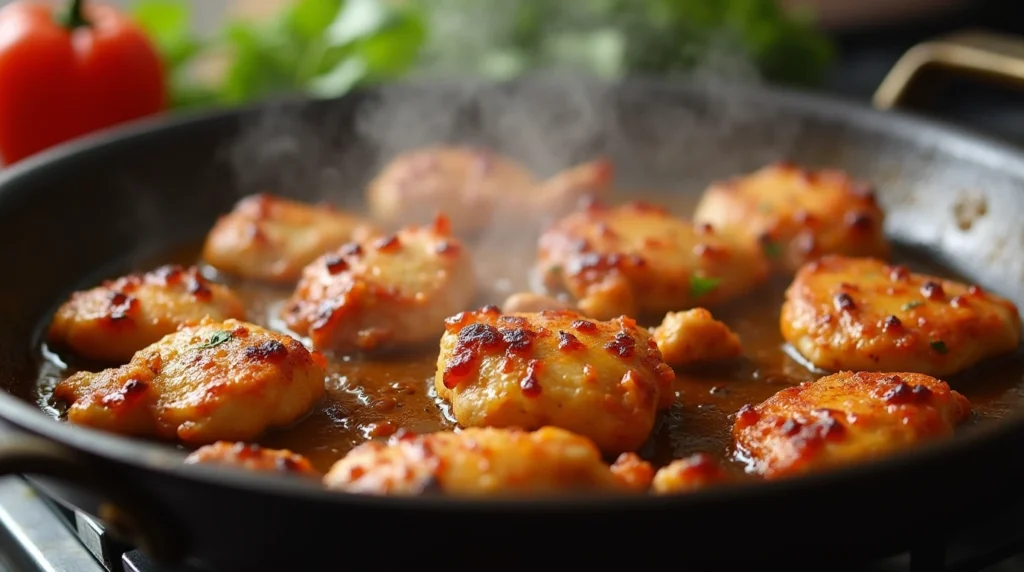
Step 3: Assemble the Pizza
After preparing the marinated chicken, you’ll want to spread a layer of marinara sauce on your pizza crust. Then, top it generously with mozzarella and the cooked chicken to make your Americanized Chicken Tikka Masala Pizza come together.
- Preheat your oven to 425°F (220°C).
- Spread a thin layer of marinara sauce evenly over the pizza crust. This represents the classic pizza base that many Americans are familiar with, while adding a unique twist with the chicken tikka.
- Sprinkle a generous layer of mozzarella cheese over the sauce. The cheese helps to balance out the strong spices of the chicken and provides the creamy texture Americans love.
- Evenly distribute the cooked chicken tikka pieces over the cheese.
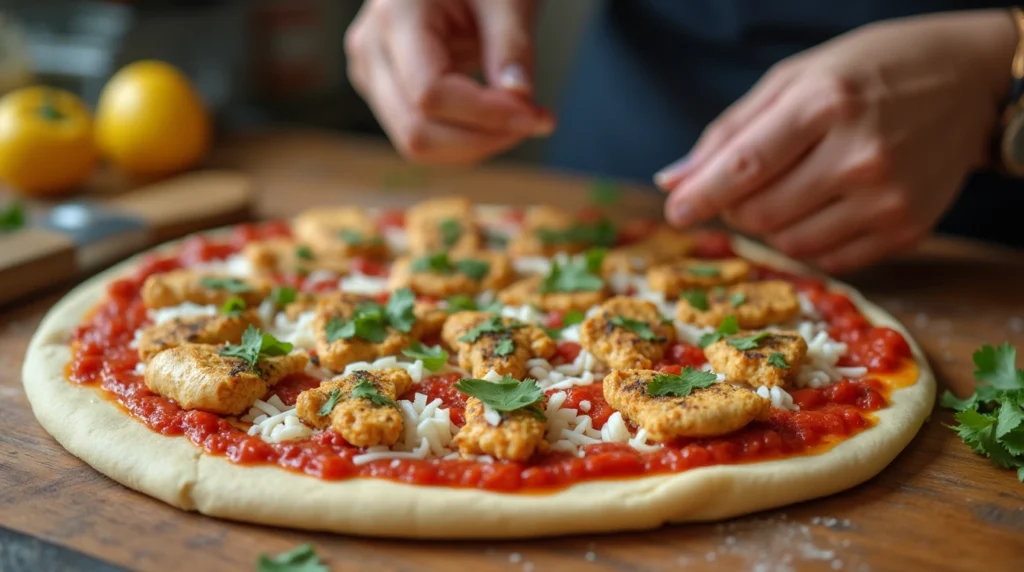
Step 4: Bake the Pizza
- Place the pizza on a baking sheet or stone and bake for 12-15 minutes, or until the crust is crispy and the cheese is melted and bubbly.
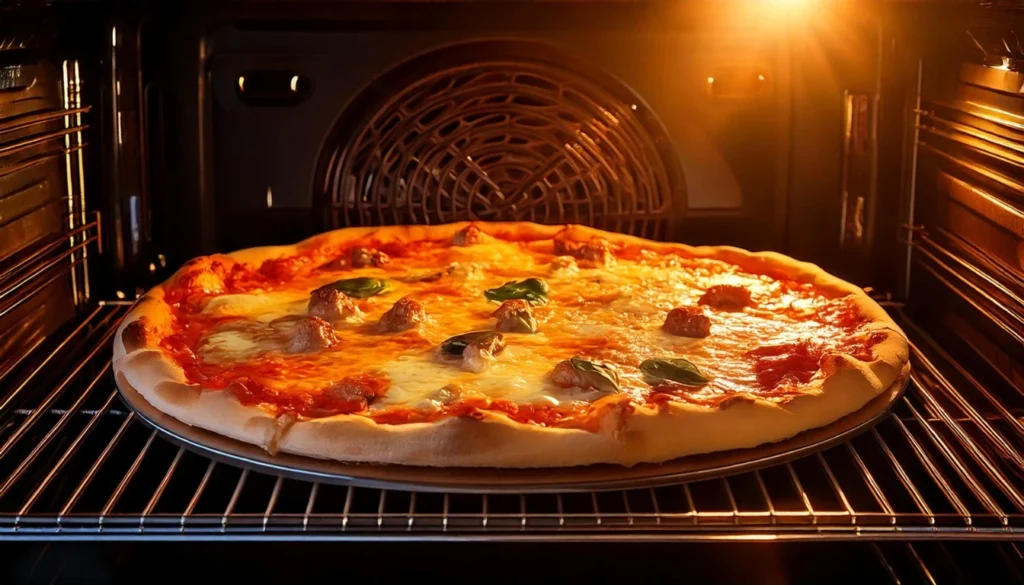
Step 5: Garnish and Serve
- Remove the pizza from the oven and let it cool slightly.
- Garnish with thinly sliced red onion, chopped cilantro, and crushed red pepper flakes for an extra kick.
- Slice and serve warm.
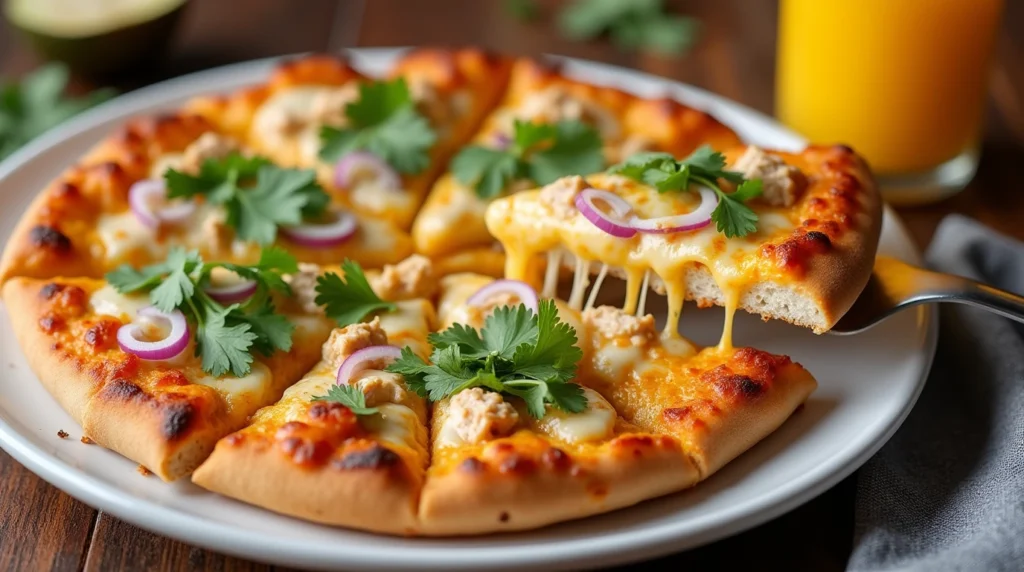
Pro Tips and Variations
- Substitutions: If you prefer a vegetarian version, swap the chicken for paneer (a traditional Indian cheese) or roasted vegetables like bell peppers and zucchini.
- Homemade Dough: For a more authentic pizza experience, try making your own pizza dough from scratch. You can add herbs like oregano or basil to the dough to enhance the overall flavor.
- Fusion Experimentation: Try adding a drizzle of tzatziki sauce or a sprinkle of feta cheese for a Mediterranean twist. The creamy texture of tzatziki pairs beautifully with the spices of the chicken tikka.
- Spice Level: Adjust the spice level in the chicken marinade to suit your heat tolerance. You can add more chili or omit it entirely if you prefer a milder flavor.
- Grilling Option: For an added smoky flavor, consider grilling the chicken tikka instead of pan-searing it. This will impart a unique depth of flavor to the dish.
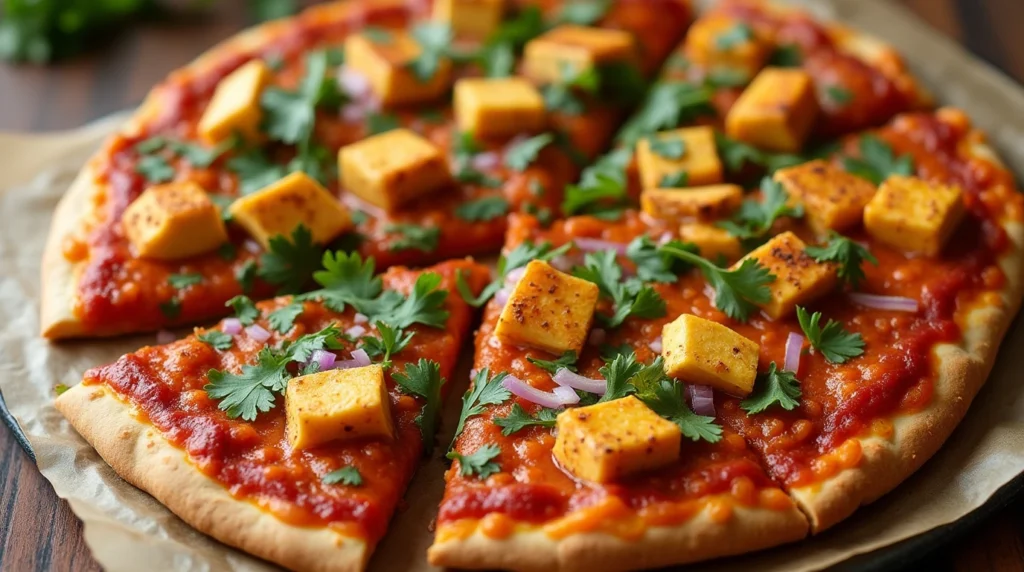
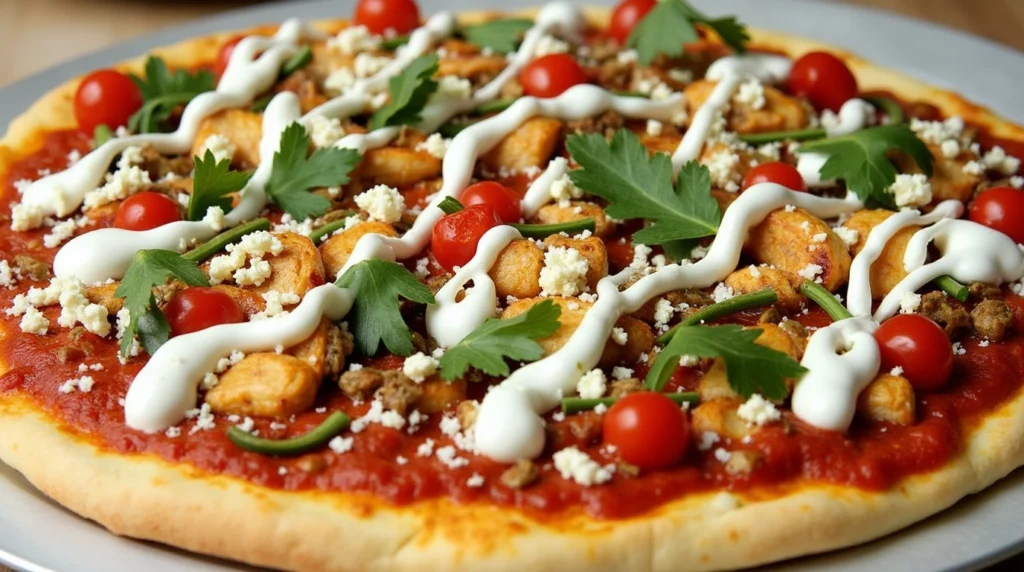
Serving Suggestions
- Pairings: Serve this pizza with a side of garlic bread or a fresh green salad and refreshing mango lassi for a complete meal. The salad can offer a refreshing contrast to the rich flavors of the pizza.
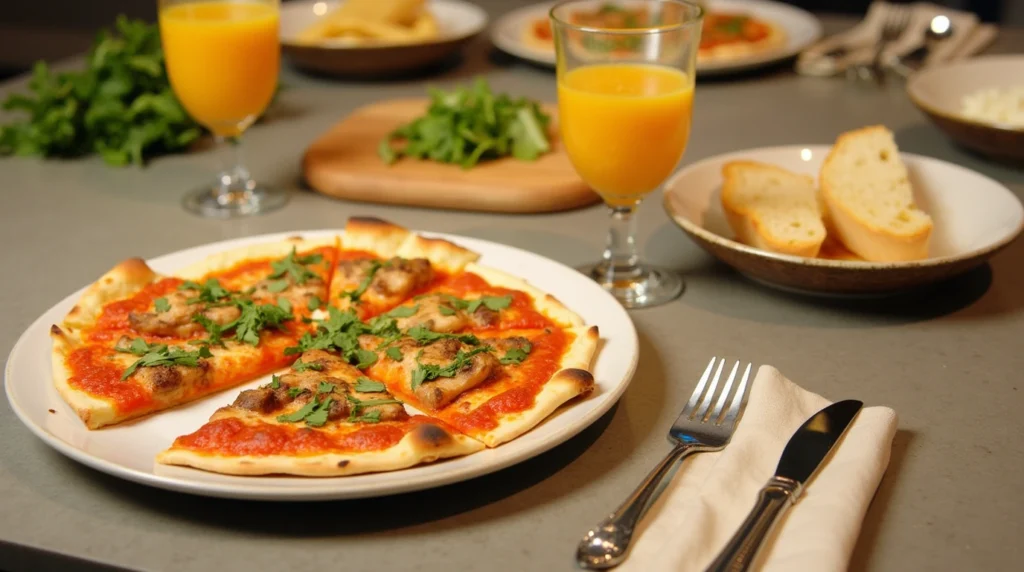
- Beverages: Pair the pizza with a refreshing mango lassi, which is a traditional yogurt-based Indian drink that complements the spice in the chicken tikka and can balance the bold flavors.
- Presentation: Cut the pizza into smaller slices and serve as an appetizer at parties or gatherings. The fusion of Indian and Italian flavors will be a talking point for guests.
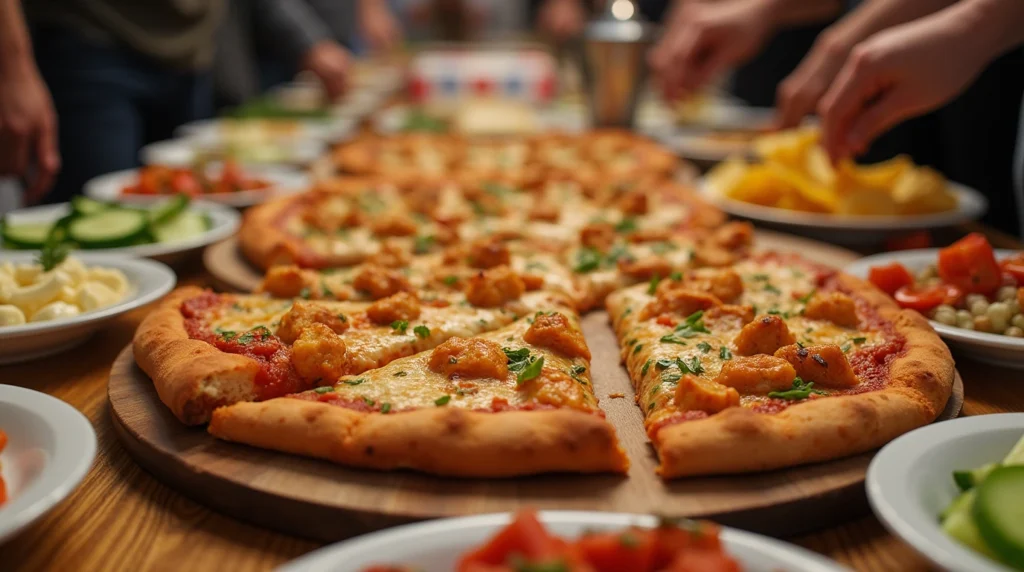
The Americanized Chicken Tikka Masala Pizza is a dish that’s sure to impress anyone. Whether you’re hosting a casual dinner or preparing a unique meal for your family, this fusion pizza combines the best of both worlds.
Conclusion
Americanizing traditional foods is more than just adapting ingredients; it’s about blending cultures, flavors, and techniques to create dishes that resonate with a broader audience. The Chicken Tikka Masala Pizza is a perfect example of how two culinary worlds can collide beautifully, offering a dish that’s both comforting and adventurous. By experimenting with fusion cuisine, you can bring global flavors into your home and make them more accessible to your local tastes.
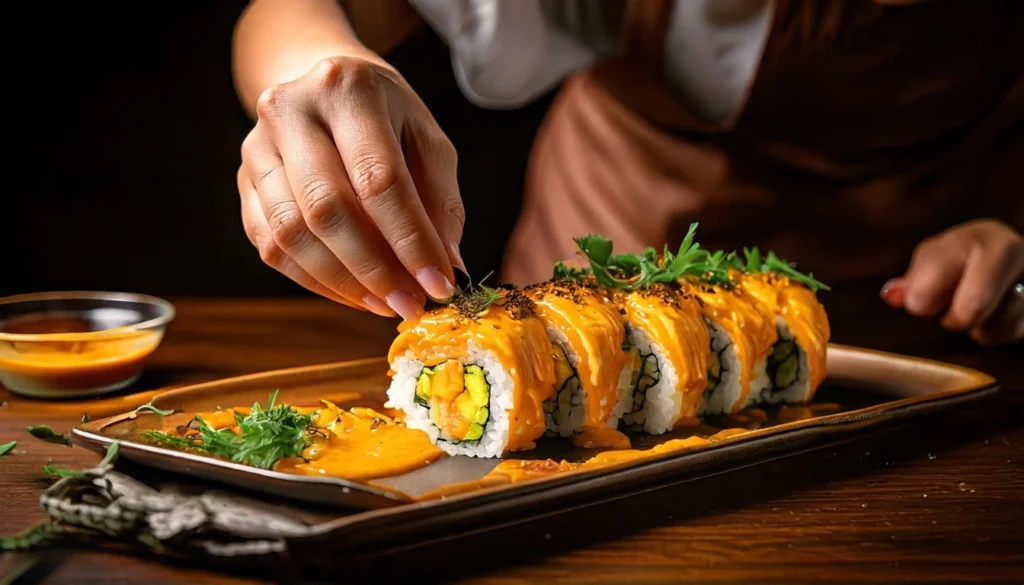
With just a little creativity, you can transform any traditional dish into a fusion masterpiece. Whether you’re making Americanized versions of sushi, tacos, or pizza, the possibilities are endless. Embrace the art of culinary fusion and discover the magic of combining familiar and exotic ingredients to create something extraordinary.
Recipe Recap
Recipe Details:
| Prep Time | Cook Time | Total Time | Servings | Calories |
| 15 minutes | 25 minutes | 40 minutes | 4 | 320 per serving |
Nutrition Information (Per Serving)
| Calories | 320 |
| Total Fat | 12g |
| Cholesterol | 4g |
| Cholesterol | 30mg |
| Sodium | 420mg |
| Total Carbohydrates | 40g |
| Dietary Fiber | 5g |
| Sugars | 6g |
| Protein | 12g |
This recipe is designed to be approachable yet flavorful, perfect for anyone eager to explore fusion cooking at home!

